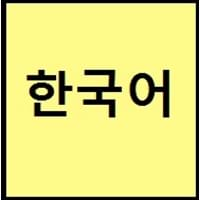Countries
Malaysia, Mauritius, Puducherry, Singapore, Sri Lanka, Tamil Nadu
China, Jilin Province, North Korea, South Korea, Yanbian
National Language
Singapore, Sri Lanka, Tamil Nadu
North Korea, South Korea
Second Language
Andaman and Nicobar Islands, kerala, Puducherry
Not spoken in any of the countries
Speaking Continents
Asia
Asia
Minority Language
Canada, Malaysia, Mauritius, Reunion, Seychelles
Japan, People's Republic of China, Russia, United States of America
Regulated By
Official language Commission of Government of Tamil Nadu, Thanjavur Tamil University
The National Institute of the Korean Language
Interesting Facts
- Tamil is the oldest language in the world. Tamil was spoken in South India more than 5000 years ago.
- The first legally recognized Classical Language of India is Tamil.
- Korean has borrowed words from English and Chinese.
- Korean has two counting systems. First, is based on Chinese characters and numbers are similar to Chinese numbers, and second counting system is from words unique to Korea.
Similar To
Malayalam
Chinese and Japanese languages
Derived From
Not Available
Not Available
Alphabets in
Tamil-Alphabets.jpg#200
Korean-Alphabets.jpg#200
Writing Direction
Left-To-Right, Horizontal
Left-To-Right, Horizontal, Top-To-Bottom
Hello
வணக்கம் (Vanakkam)
안녕하세요. (annyeonghaseyo.)
Thank You
நன்றி (Naṉṟi)
감사합니다 (gamsahabnida)
How Are You?
நீங்கள் எப்படி இருக்கிறீர்கள்? (Nīṅkaḷ eppaṭi irukkiṟīrkaḷ?)
어떻게 지내세요? (eotteohge jinaeseyo?)
Good Night
நல்ல இரவு (Good night) / irravu vanakkam (Good night)
안녕히 주무세요 (annyeonghi jumuseyo)
Good Evening
நல்ல மாலை (Nalla mālai)/ மாலை (irravu vanakkam)
안녕하세요 (annyeonghaseyo.)
Good Afternoon
பிற்பகல் வணக்கம் (perpagal vanakkam)
안녕하십니까 (annyeong hashimnikka)
Good Morning
காலை வணக்கம் (Kaalai Vanakkam)
안녕히 주무셨어요 (An-yŏng-hi ju-mu-shŏ-ssŏ-yo)
Please
தயவு (Tayavu)
하십시오 (hasibsio)
Sorry
மன்னிக்கவும் (Maṉṉikkavum)
죄송합니다 (joesonghabnida)
Bye
சென்று வருகிறேன் (Sendru Varukiren)
안녕 (annyeong)
I Love You
நான் உன்னை காதலிக்கிறேன் (Naan Unnai Kadalikiren)
당신을 사랑합니다 (dangsin-eul salanghabnida)
Excuse Me
என்னை மன்னியுங்கள் (Eṉṉai maṉṉiyuṅkaḷ)
실례합니다 (sillyehabnida)
Where They Speak
Kongu
South Korea
How Many People Speak
Not Available
Dialect 2
Madurai Tamil
Gyeongsang
Where They Speak
Madurai, South Tamil Nadu
South Korea
How Many People Speak
Not Available
Dialect 3
Tirunelveli Tamil
Hamgyŏng
Where They Speak
South Tamil Nadu, Thoothukudi, Tirunelveli
China, North Korea
Second Language Speakers
Not Available
Native Name
தமிழ்
한국어 (조선말)
Alternative Names
Damulian, Tamal, Tamalsan, Tambul, Tamili
Hanguk Mal, Hanguk Uh
French Name
tamoul
coréen
German Name
Tamil
Koreanisch
Pronunciation
[t̪ɐmɨɻ]
Not Available
Ethnicity
Tamil people or Tamilans
Koreans
Origin
300 BC
Before 1st century
Language Family
Dravidian Family
Koreanic Family
Subgroup
Not Available
Not Available
Branch
Not Available
Not Available
Early Forms
Old Tamil and Middle Tamil
Old Korean, Middle Korean and Korean
Standard Forms
Modern Tamil
Pluricentric Standard Korean, South Korean standard and North Korean standard
Signed Forms
Signed Tamil
Korean Sign Language
Scope
Individual
Individual
ISO 639 6
tam
Not Available
Glottocode
tami1289, oldt1248
kore1280
Linguasphere
tami1289
45-AAA
Language Type
Living
Living
Language Linguistic Typology
Subject-Object-Verb
Subject-Object-Verb
Language Morphological Typology
Not Available
Agglutinative
Tamil and Korean Speaking population
Tamil and Korean speaking population is one of the factors based on which Tamil and Korean languages can be compared. The total count of Tamil and Korean Speaking population in percentage is also given. The percentage of people speaking Tamil language is 1.06 % whereas the percentage of people speaking Korean language is 1.14 %. When we compare the speaking population of any two languages we get to know which of two languages is more popular. Find more details about how many people speak Tamil and Korean on Tamil vs Korean where you will get native speakers, speaking population in percentage and native names.
Tamil and Korean Language Codes
Tamil and Korean language codes are used in those applications where using language names are tedious. Tamil and Korean Language Codes include all the international language codes, glottocodes and linguasphere.





